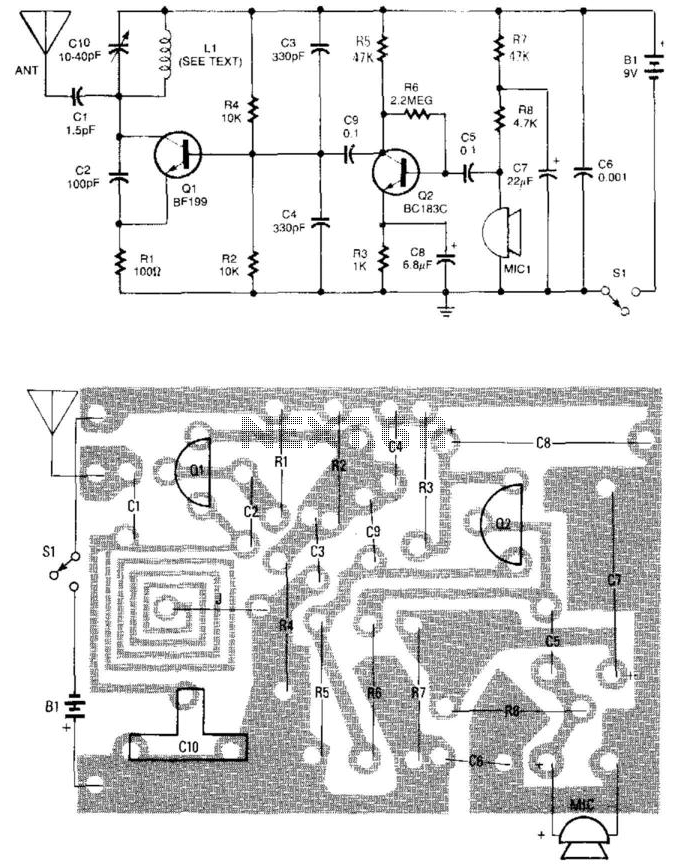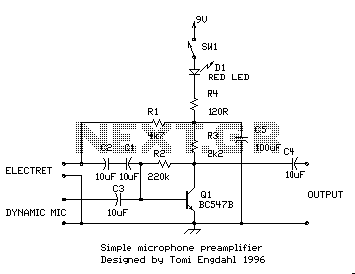
microphone Sennheiser MKH 415 T

The Sennheiser MKH 415 T is a medium shotgun microphone powered by the 12VDC A-B standard (also known as DIN 45 595 or T-power). It served as the predecessor to the widely recognized MKH 416, which continues to be produced. According to Sennheiser's history, the original MKH 415 prototype was longer than the final version, leading to complaints from broadcast engineers about the need for microphone operators to follow actors to stay within the microphone's pickup field. Dr. Hans-Joachim Griese reportedly interrupted a prototype demonstration to request a hacksaw, asking how much directivity was desired, and then proceeded to shorten the microphone's interference tube. This modification resulted in a more compact shotgun microphone that struck an ideal balance. Both the MKH 415 and 416 utilize RF Condenser technology, which combines a loosely tensioned diaphragm with low polarization voltage to yield a low-noise signal with minimal environmental interference. The MKH 415 T features a combination of a pressure gradient transducer and an interference microphone. Its directional characteristic is super-cardioid at low and medium frequencies, while at higher frequencies, the pattern becomes club-shaped. The microphone is less susceptible to wind and pop noises due to the relatively high acoustical membrane pressure. The MKH 415 T, like all T-powered microphones, requires a specific power supply that differs from the P48 phantom supplies that have become standard since the MKH 415 was manufactured. Sennheiser has developed various battery- and AC-powered supplies for their T-power microphones, including the MZA 15 (and MZA 15-U) inline battery adapter, as well as the MZN 5-1 and MZN 6 power supplies.
The Sennheiser MKH 415 T microphone is engineered for professional audio applications, particularly in broadcasting and film production, where high fidelity and precise directionality are paramount. The microphone's RF Condenser technology ensures that it captures audio with exceptional clarity, making it suitable for dialogue and sound effects in dynamic environments. The super-cardioid polar pattern allows for focused sound capture, minimizing background noise and enhancing the quality of recorded audio.
In terms of physical design, the MKH 415 T's interference tube is a critical component that influences its directional characteristics. The length and diameter of the interference tube are optimized to achieve the desired frequency response and directional sensitivity. The club-shaped pattern at higher frequencies allows for a wide capture angle while still maintaining a high degree of directionality, which is particularly advantageous in live settings or when recording moving subjects.
The microphone's low susceptibility to wind and pop noises is a significant advantage for outdoor recording and on-location shoots. This is achieved through the design of the acoustical membrane, which is engineered to withstand variations in air pressure without compromising audio quality.
Powering the MKH 415 T requires careful attention to the specifications of the T-power supply. The microphone operates on a 12VDC A-B standard, necessitating the use of compatible power supplies such as the MZA 15 or MZN series. These power supplies not only provide the necessary voltage but also ensure stable operation, which is crucial for maintaining audio integrity during recording sessions.
Overall, the Sennheiser MKH 415 T is a sophisticated microphone that combines innovative technology with practical design features, making it a valuable tool for audio professionals seeking reliable performance in diverse recording environments.The Sennheiser MKH 415 T is a medium shotgun microphone, powered by the 12VDC A-B standard (aka DIN 45 595, aka T power). It was the forerunner to the popular MKH 416, which is still made. According to Sennheiser lore, the original MKH 415 prototype was longer, causing complaints from broadcast engineers that microphone operators would have to
follow actors to keep them within the mic`s field of pickup. Dr. Hans-Joachim Griese reportedly interrupted the prototype demonstration to request a hacksaw, asking how much directivity would you like , then proceeded to saw off a length of the mic`s interference tube. The resulting shorter length was deemed an ideal compromise, and thus the shorter shotgun mic was born.
Both the MKH 415 and 416 use RF Condenser technology, which combines a loose diaphragm tension with low polarization voltage to produce a low-noise signal with reduced susceptibility to environmental factors. The MKH 415 T represents a combination of a pressure gradient transducer and an interference microphone.
The directional characteristic is super-cardioid at low and medium frequencies, at higher frequencies the directianal pattern is club-shaped. The microphone`s susceptibility to wind and pop noises is low due to the relative high acoustical membrane pressure The MKH 415 T, like all T-powered microphones, requires a specific power supply that is different from P48 phantom supplies that have become standard since the 415 was manufactured.
Sennheiser created a variety of battery- and AC-powered supplies for their T-power microphones, such as the MZA 15 (and MZA 15-U) inline battery adapter, the MZN 5-1 and MZN 6 power supplies. 🔗 External reference
The Sennheiser MKH 415 T microphone is engineered for professional audio applications, particularly in broadcasting and film production, where high fidelity and precise directionality are paramount. The microphone's RF Condenser technology ensures that it captures audio with exceptional clarity, making it suitable for dialogue and sound effects in dynamic environments. The super-cardioid polar pattern allows for focused sound capture, minimizing background noise and enhancing the quality of recorded audio.
In terms of physical design, the MKH 415 T's interference tube is a critical component that influences its directional characteristics. The length and diameter of the interference tube are optimized to achieve the desired frequency response and directional sensitivity. The club-shaped pattern at higher frequencies allows for a wide capture angle while still maintaining a high degree of directionality, which is particularly advantageous in live settings or when recording moving subjects.
The microphone's low susceptibility to wind and pop noises is a significant advantage for outdoor recording and on-location shoots. This is achieved through the design of the acoustical membrane, which is engineered to withstand variations in air pressure without compromising audio quality.
Powering the MKH 415 T requires careful attention to the specifications of the T-power supply. The microphone operates on a 12VDC A-B standard, necessitating the use of compatible power supplies such as the MZA 15 or MZN series. These power supplies not only provide the necessary voltage but also ensure stable operation, which is crucial for maintaining audio integrity during recording sessions.
Overall, the Sennheiser MKH 415 T is a sophisticated microphone that combines innovative technology with practical design features, making it a valuable tool for audio professionals seeking reliable performance in diverse recording environments.The Sennheiser MKH 415 T is a medium shotgun microphone, powered by the 12VDC A-B standard (aka DIN 45 595, aka T power). It was the forerunner to the popular MKH 416, which is still made. According to Sennheiser lore, the original MKH 415 prototype was longer, causing complaints from broadcast engineers that microphone operators would have to
follow actors to keep them within the mic`s field of pickup. Dr. Hans-Joachim Griese reportedly interrupted the prototype demonstration to request a hacksaw, asking how much directivity would you like , then proceeded to saw off a length of the mic`s interference tube. The resulting shorter length was deemed an ideal compromise, and thus the shorter shotgun mic was born.
Both the MKH 415 and 416 use RF Condenser technology, which combines a loose diaphragm tension with low polarization voltage to produce a low-noise signal with reduced susceptibility to environmental factors. The MKH 415 T represents a combination of a pressure gradient transducer and an interference microphone.
The directional characteristic is super-cardioid at low and medium frequencies, at higher frequencies the directianal pattern is club-shaped. The microphone`s susceptibility to wind and pop noises is low due to the relative high acoustical membrane pressure The MKH 415 T, like all T-powered microphones, requires a specific power supply that is different from P48 phantom supplies that have become standard since the 415 was manufactured.
Sennheiser created a variety of battery- and AC-powered supplies for their T-power microphones, such as the MZA 15 (and MZA 15-U) inline battery adapter, the MZN 5-1 and MZN 6 power supplies. 🔗 External reference





